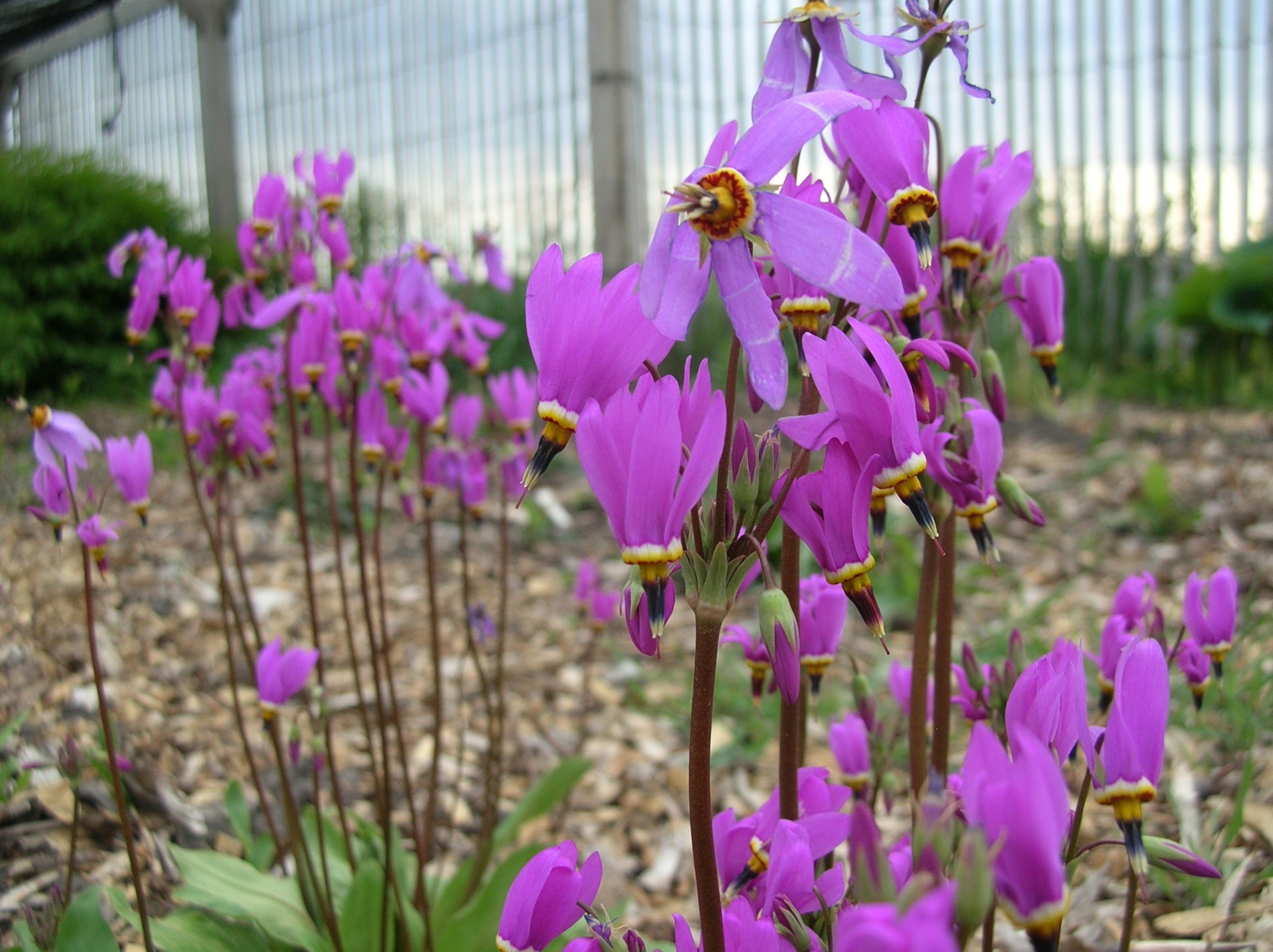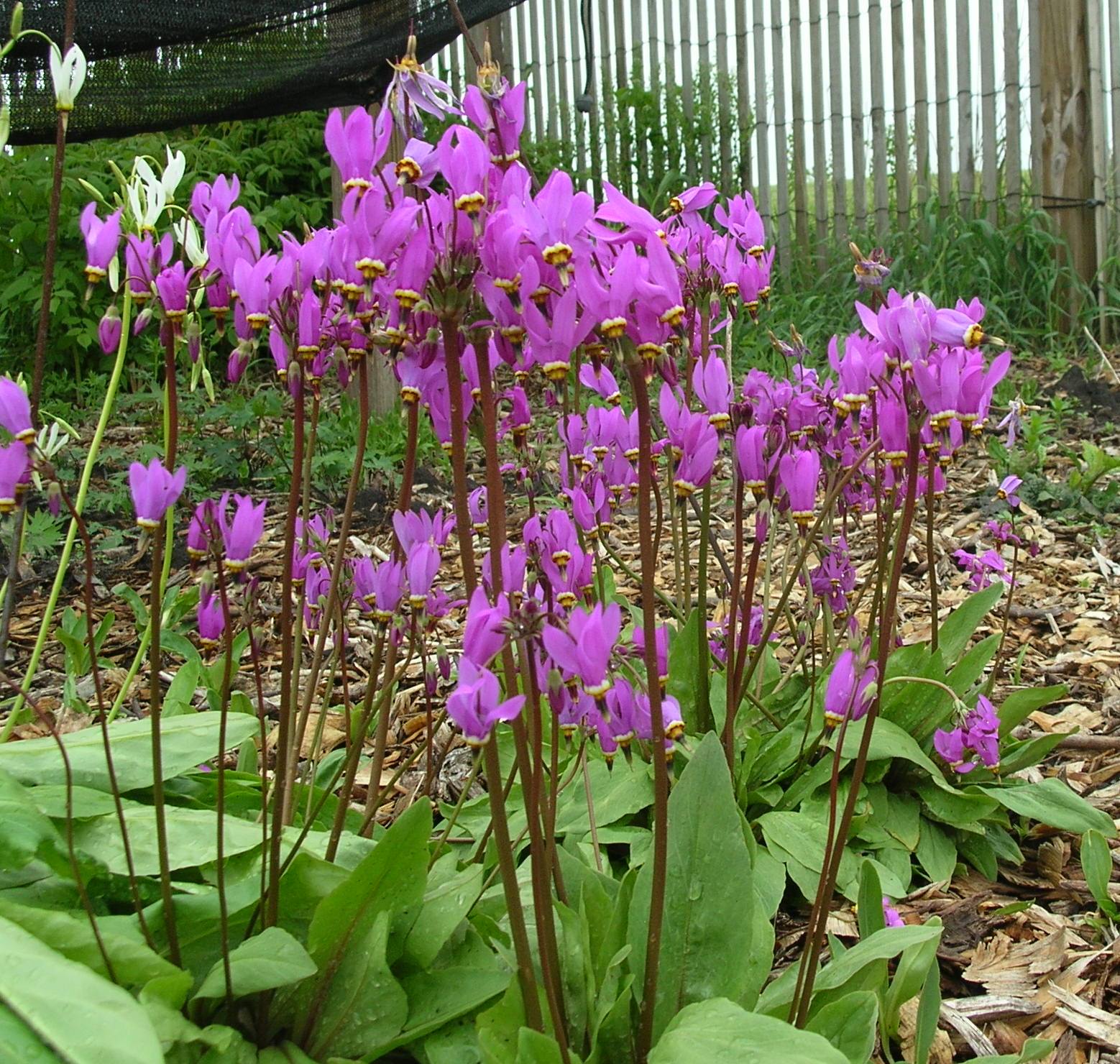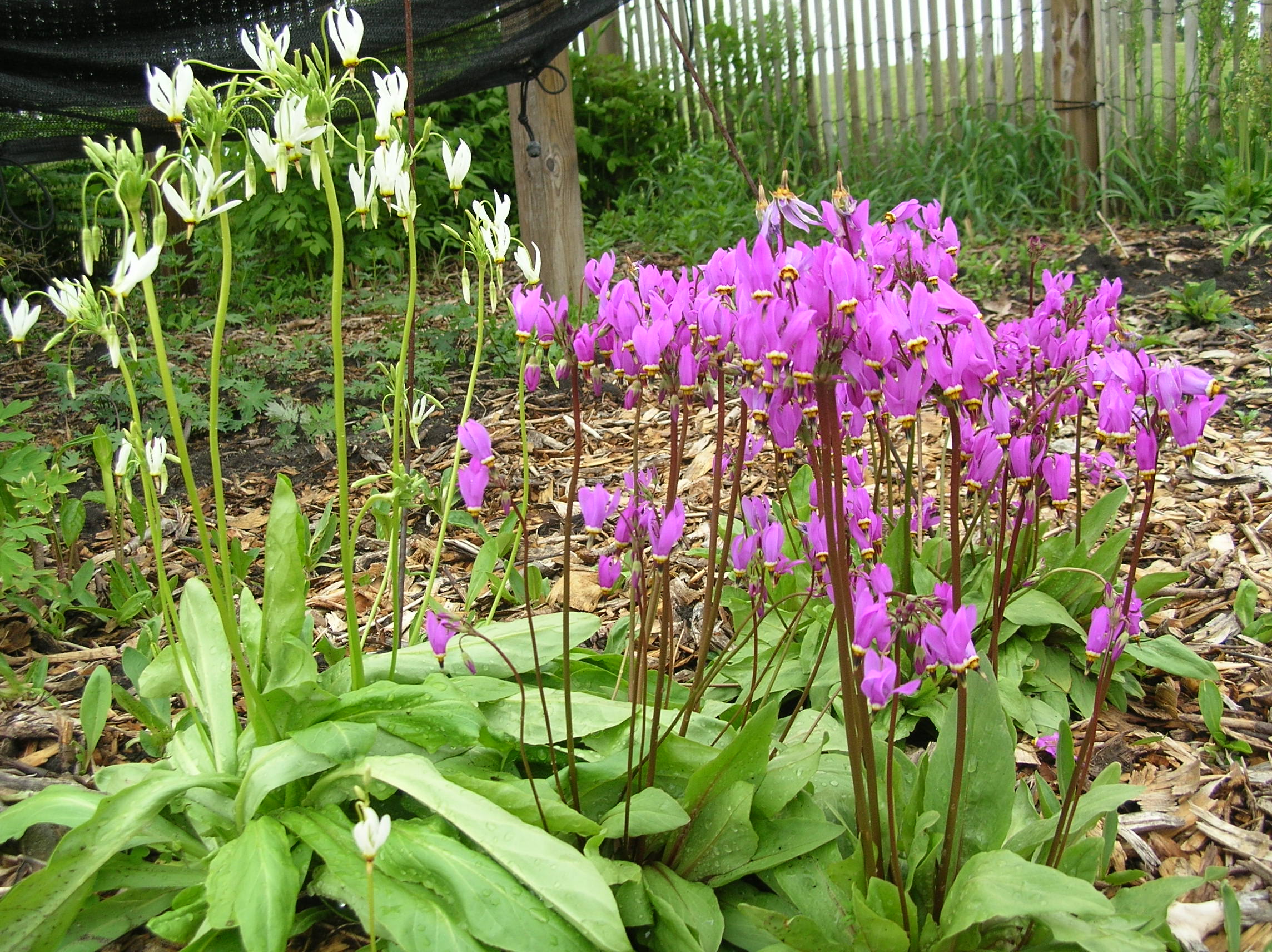Description
OUT OF STOCK – EMAIL FOR AVAILABILITY
Only available for purchase in spring – Ephemeral
Rosy-lilac reflexed flowers, looking like a descending shuttlecock, dangle from stems in spring
Rosy-lilac reflexed flowers, looking like a descending shuttlecock, dangle from stems in spring
OUT OF STOCK – EMAIL FOR AVAILABILITY
Only available for purchase in spring – Ephemeral
Rosy-lilac reflexed flowers, looking like a descending shuttlecock, dangle from stems in spring
OUT OF STOCK
“Dwarf ornamental shrub, ornamental in foliage, flowers and berry.” Rand 1866. In spring fragrant, pinkish-white bell-shaped flowers, evergreen, glossy foliage and Marlboro red berries in fall. Great for cascading over edge of wall or groundcover.
Size: 4” x 20” forms dense groundcover over time. Stems root to spread.
Care: sun to part shade in moist well-drained to dry, acidic soil. Needs watering until established. Best grown with protection from wind.
Native: No. America, Wisconsin native
Wildlife Value: Host for several butterfly species including Hoary Elfin, Brown Elfin and Freija Fritillary.
Awards: Cary Award Distinctive Plants for New England
Kinnikinnick is Algonquin meaning “mixture.” Used as an ingredient in Native American smoke mixtures. For centuries leaves used to make medicinal tea as a tonic and diuretic in many parts of the world. Cheyenne drank the tea to cure back sprains. Some Native Americans used it to cure venereal disease, others to cure pimples and itching, peeling skin. Both Indians and colonists mixed leaves with tobacco for smoking. Collected by Meriwether Lewis on the Expedition.
Brilliant orange with purple spots, turks-cap lily with dramatic, swept-back petals blooming late summer to early fall. Slow to mature but when it does it bears up to 40 flowers on one plant.
Size: 10’ x 12”
Care: Sun in moist to moist-well-drained, acidic soil
Native: from VT to Fl & west to Mississippi River, Wisconsin native
Lilium was named for the Greek word for smooth, polished referring to its leaves. This collected before 1665. In his 1665 book, Flora, seu de Florum Cultura John Rea, nurseryman and author, called it the “Virginia Martagon.” Sold in America’s 1st plant catalog, Bartram’s Broadside, 1783. L.H. Bailey (1913): “The most magnificent and showy of native North American species, well worthy of extensive cultivation.”
OUT OF STOCK
Clean white variegated leaves and flowers (bracts), very showy midsummer to fall. Use caution with internal milky sap.
Size: 18” x 10”
Care: sun moist well-drained soil, drought tolerant.
Native: Plains from Dakota to Texas
Size: Wonderful cut flower just be careful of the milky sap.
Sioux crushed leaves in water and boiled it for a liniment to remedy swelling; boiled whole leaves in water to increase milk for new mothers. Collected on Lewis and Clark expedition three times, once July 28, 1806 along Marias River. A “most elegant species.” Breck, 1851.
OUT OF STOCK
Gorgeous – July – September bright orange cymes
Size: 2-3' x 12"
Care: Sun in well-drained to moist well-drained soil
Native: East and south North America, Wisconsin native
Wildlife Value: Host for Monarch caterpillars and its nectar is a favorite for 13 different butterflies: 4 Swallowtails, 2 Fritillaries, Checkered white, Spring azure, Small copper, Sachem, Monarch, and Coral and Gray hairstreaks. Attracts Ladybugs that eat many insect pests.
Awards: Great Plants for Great Plains; Perennial Plant Assn. Plant of the Year 2017.
Named after Asclepias, a Greek god of medicine. Omaha Indians ate the raw root to cure bronchial and pulmonary ailments, their Shell Society was the authorized guardian of the plant, taking 4 days to dig, prepare and distribute the root. Most important medicine for Menominee Indians. The Iroquois smashed roots on legs to impart strength to runners. Navajo cured coyote bites and flu with Butterfly weed. HoChunk placed masticated root into wounds. Collected and sent to England by Rev. John Banister in colonial Virginia c. 1680. Cultivated by Jefferson. Pressed specimen in Emily Dickinson’s herbarium.



